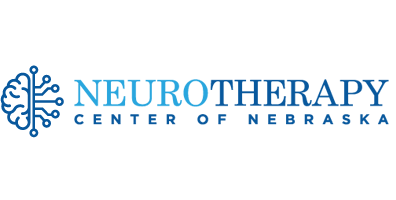Additional Benefits

Benefits of Neurotherapy with Depressive Disorder and Depressive Episodes
Depressed mood disorders include a combination of symptoms that interfere with a person’s ability to work, sleep, study, eat, and enjoy once-pleasurable activities. Depressed moods are disabling and prevent a person from functioning at their optimal level. “I just want to sit around and play solitaire. I don’t feel motivated, I feel so tired and low on energy. I don’t know why”.
The pattern for depression and some subgroups of depressed mood disorders such as dysthymia may be recognized with the use of QEEG (brain mapping). The National Alliance on Mental Illness states, “studies have shown consistently that the left front portion of the brain becomes less active during depression”. We have also seen that a lack of healthy processing brain waves in the middle and anterior part of the brain may also contribute to the symptoms of depressed mood. Since different regions of the brain may be involved in the symptoms of depressed mood disorders a brain mapping is a necessary assessment utilized to guide the treatment plan. . Neurotherapy using QEEG guided protocols has aided clients with depressed mood disorders to regulate and increase left frontal activity, increase the symmetry of processing between the left and right frontal regions of the brain and bring up the processing speed of areas of slow activity.
Neurotherapy for depressive disorders may utilize pEMF (NeuroField by Nicholas Dogris, PhD, BCN) and 19 channel LORETA neurofeedback (Neuroguide, by Robert Thatcher PhD) in training the brain to change to a more healthy way of functioning. Neurotherapy clients often report a decrease of depressed mood symptoms in a few sessions. Clients have reported feeling increases in motivation and in energy. “I’m getting out of the house and getting things accomplished”. Our clients also report improvements in sleep and waking up feeling refreshed in the morning.
Psychotherapeutic interventions are often integrated into the treatment plan for clients with mood disorders. In addition to areas of dysregulation in the brain, we have also observed that changes in physical health, hormone levels, toxicity, gastrointestinal health and food allergies can affect brain health and mental health conditions. Neurotherapy Center of Nebraska strongly suggests that our clients under the care of a competent medical provider to rule out the potential of physical health problems that may be contributing to their condition. We also recommend to never stop or decrease any medication unless advised to do so by a competent prescribing physician.
- Allen, J. B., & Cavendar, J. H. (1996). Biofeedback alters EEG asymmetry. Psychophysiology, 33(suppl), S17, (Abstract).
- Baehr, E., & Baehr, R. (1997). The use of brainwave biofeedback as an adjunctive therapeutic treatment for depression: Three case studies. Biofeedback, 25(1), 10–11.
- Baehr, E., Miller, E., Rosenfeld, J. P., & Baehr, R. (2004). Changes in frontal brain asymmetry associated with premenstrual dysphoric disorder: A single case study. Journal of Neurotherapy, 8(1), 29–42.
- Baehr, E., Rosenfeld, J. P., & Baehr, R. (1997). The clinical use of an alpha asymmetry protocol in the neurofeedback treatment of depression: Two case studies. Journal of Neurotherapy, 2(3), 10–23.
- Baehr, E., Rosenfeld, J. P., & Baehr, R. (2001). Clinical use of an alpha asymmetry neurofeedback protocol in the treatment of mood disorders: Follow-up study one to five years post therapy. Journal of Neurotherapy, 4(4), 11–18.
- Berg, K., Siever, D. (2009). A controlled comparison of audio-visual entrainment for treating Seasonal Affective Disorder. Journal of Neurotherapy, 13(3), 166–175.
- Cantor, D.S., Stevens, E. (2009). QEEG correlates of auditory-visual entrainment treatment efficacy of refractory depression. Journal of Neurotherapy, 13(2), 100–108.
- Hammond, D. C. (2005). Neurofeedback with anxiety and affective disorders. Child & Adolescent Psychiatric Clinics of North America, 14(1), 105–123.
- Hammond, D. C. (2001). Neurofeedback treatment of depression with the Roshi. Journal of Neurotherapy, 4(2), 45–56.
- Hammond, D. C. (2002). Neurofeedback training for anger control. Journal of Neurotherapy, 5(4), 98–103.
- Hardman, E., Gruzelier, J., Chessman, K., Jones, C., Liddiard, D., Schleichert, H., & Birbaumer, N. (1997). Frontal interhemispheric asymmetry: Self-regulation and individual differences in humans. Neuroscience Letters, 221, 117–120.
- Jenkins, P., & Moore, W. H. (1985).The effects of visual feedback on hemispheric alpha asymmetries and reported processing strategies: A single-subject experimental design. Brain & Cognition, 4(1), 47–58.
- Kotchoubey, B., Schleichert, H., Lutzenberger, W., Anokhin, A. P., & Birbaumer, N. (1996). Self-regulation of interhemispheric asymmetry in humans. Neuroscience Letters, 215, 91–94.
- Kumano, H., Horie, H., Shidara, T., Kuboki, T. et al. (1996). Treatment of a depressive disorder patient with EEG-driven photic stimulation. Biofeedback & Self-Regulation, 21(4), 323–334.
- Putnam, J. A., (2002). EEG biofeedback on a female stroke patient with depression: A case study. Journal of Neurotherapy, 5(3), 27–38.
- Raymond, J., Varney, C., Parkinson, L. A., & Gruzelier, J. H. (2005). The effects of alpha/theta neurofeedback on personality and mood. Cognitive Brain Research, 23, 287–292.
- Rosenfeld, J. P. (2000). An EEG biofeedback protocol for affective disorders. Clinical Electroencephalography, 31(1), 7–12.
- Rosenfeld, J. P. (1997). EEG biofeedback of frontal alpha asymmetry in affective disorders. Biofeedback, 25(1), 8–25.
- Rosenfeld, J. P., Baehr, E., Baehr, R., Gotlib, I. H., & Ranganath, C. (1996). Preliminary evidence that daily changes in frontal alpha asymmetry correlate with changes in affect in therapy sessions. International Journal of Psychophysiology, 23, 137–141.
- Rosenfeld, J. P., Cha, G., Blair, T., & Gotlib, I. (1995). Operant biofeedback control of left-right frontal alpha power differences. Biofeedback & Self-Regulation, 20, 241–258.
- Saxby, E., & Peniston, E. G. (1995). Alpha-theta brainwave neurofeedback training: an effective treatment for male and female alcoholics with depressive symptoms. Journal of Clinical Psychology, 51, 685–693.
- Schneider, F., Heimann, H., Mattes, R., Lutzenberger, W., & Birbaumer, N. (1992). Self-regulation of slow cortical potentials in psychiatric patients: Depression. Biofeedback & Self-Regulation, 17, 203–214.
- Uhlmann, C., & Froscher, W. (2001). Biofeedback treatment in patients with refractory epilepsy: Changes in depression and control orientation. Seizure, 10, 34–38.
- Walker, J. E., Lawson, R., & Kozlowski, G. (2007). Current status of QEEG and neurofeedback in the treatment of depression. Chapter in J. R. Evans (Ed.), Handbook of Neurofeedback. Binghampton, NY: Haworth Medical Press, 341–351.
- Walker, J., (2013). QEEG-guided neurofeedback for anger/anger control disorder. Journal of Neurotherapy.

